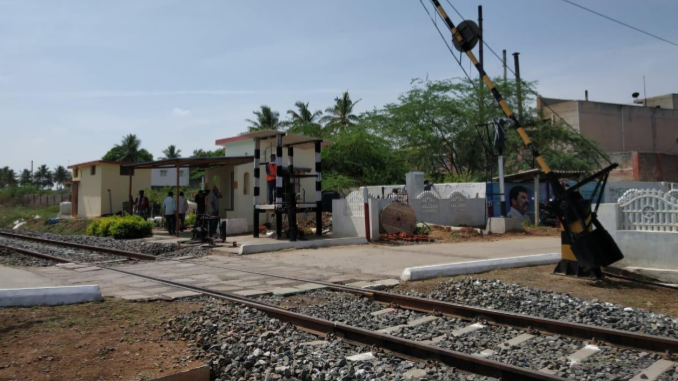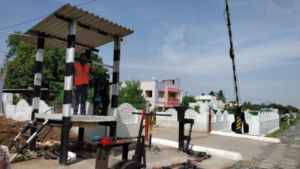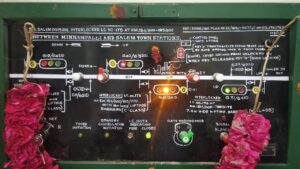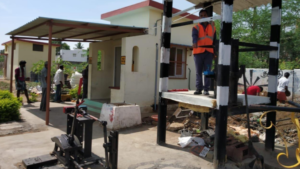
The average number of consequential train accidents during the period, 2004-14 was 171 per annum, while the average number of consequential train accidents during the period, 2014-23 has declined to 71 per annum.

More Details:
The following measures have been taken by the Government to enhance safety in train operations and minimise train accidents:
- Rashtriya Rail Sanraksha Kosh (RRSK) was introduced in 2017-18 for replacement/renewal/upgradation of critical safety assets, with a corpus of Rs. 1 lakh crore for five years.
- From 2017-18 till 2021-22, a Gross expenditure of Rs. 1.08 lakh crore was incurred on RRSK works. In 2022-23, the Govt. extended the currency of RRSK for another period of five years with Gross Budgetary Support (GBS) of Rs. 45,000 crores.
- Electrical/Electronic Interlocking Systems with centralised operation of points and signals have been provided at 6498 stations up to 31.10.2023 to eliminate accidents due to human failure.
- Interlocking of Level Crossing (LC) Gates has been provided at 11137 level Crossing Gates up to 31.10.2023 for enhancing safety at LC gates.
- Complete Track Circuiting of stations to enhance safety for verification of track occupancy by electrical means has been provided at 6548 stations up to 31.10.2023.
- Detailed instructions on issues related with safety of Signalling e.g. mandatory correspondence check, alteration work protocol, preparation of completion drawing, etc. have been issued.
- System of disconnection and reconnection for S&T equipment as per protocol has been re-emphasized.
- All locomotives are equipped with Vigilance Control Devices (VCD) to ensure alertness of Loco Pilots.
- Retro-reflective sigma boards are provided on the mast which is located two OHE masts prior to the signals in electrified territories to warn the crew about the signal ahead when visibility is low due to foggy weather.
- A GPS based Fog Safety Device (FSD) is provided to loco pilots in fog affected areas which enables loco pilots to know the distance of the approaching landmarks like signals, level crossing gates etc.
- Modern track structure consisting of 60kg, 90 Ultimate Tensile Strength (UTS) rails, Prestressed Concrete Sleeper (PSC) Normal/Wide base sleepers with elastic fastening, fan shaped layout turnout on PSC sleepers, Steel Channel/H-beam Sleepers on girder bridges is used while carrying out primary track renewals.

- Mechanisation of track laying activity through use of track machines like PQRS, TRT, T-28 etc to reduce human errors.
- Maximising supply of 130m/260m long rail panels for increasing progress of rail renewal and avoiding welding of joints, thereby ensuring safety.
- Laying of longer rails, minimising the use of Alumino Thermic Welding and adoption of better welding technology for rails i.e. Flash Butt Welding.
- Monitoring of track geometry by OMS (Oscillation Monitoring System) and TRC (Track Recording Cars).
- Patrolling of railway tracks to look out for weld/rail fractures.
- The use of Thick Web Switches and Weldable CMS Crossing in turnout renewal works. Inspections at regular intervals are carried out to monitor and educate staff for observance of safe practices.
- Web based online monitoring system of track assets viz. Track database and decision support system has been adopted to decide rationalised maintenance requirements and optimise inputs.
- Detailed instructions on issues related with safety of Track e.g. integrated block, corridor block, worksite safety, monsoon precautions etc. have been issued.
- Preventive maintenance of railway assets (Coaches & Wagons) is undertaken to ensure safetrain operations and to keep a check on Rail Accidents across the country.

- Replacement of conventional ICF design coaches with LHB design coaches is being done.
- All unmanned level crossings (UMLCs) on the Broad Gauge (BG) route have been eliminated by January 2019.
- Safety of Railway Bridges is ensured through regular inspection of Bridges. The requirement of repair/rehabilitation of Bridges is taken up based upon the conditions assessed during these inspections.
- Indian Railways has displayed Statutory “Fire Notices” for widespread passenger information in all coaches. Fire posters are provided in every coach so as to inform and alert passengers regarding various Do’s and Don’ts to prevent fire. These include messages regarding not carrying any inflammable material, explosives, prohibition of smoking inside the coaches, penalties etc.
- Production Units are providing Fire detection and suppression systems in newly manufactured Power Cars and Pantry Cars, Fire and Smoke detection systems in newly manufactured coaches. Progressive fitment of the same in existing coaches is also underway by Zonal Railways in a phased manner.
- Regular counselling and training of staff is undertaken.
- Concept of Rolling Block introduced in Indian Railways (Open Lines) General Rules vide gazette notification dated 30.11.2023, wherein work of maintenance/repair/replacement is planned for 52 weeks in advance on rolling basis and executed as per plan.
Source: PIB- Press Release | Image Credit (representational): Southern Railway

